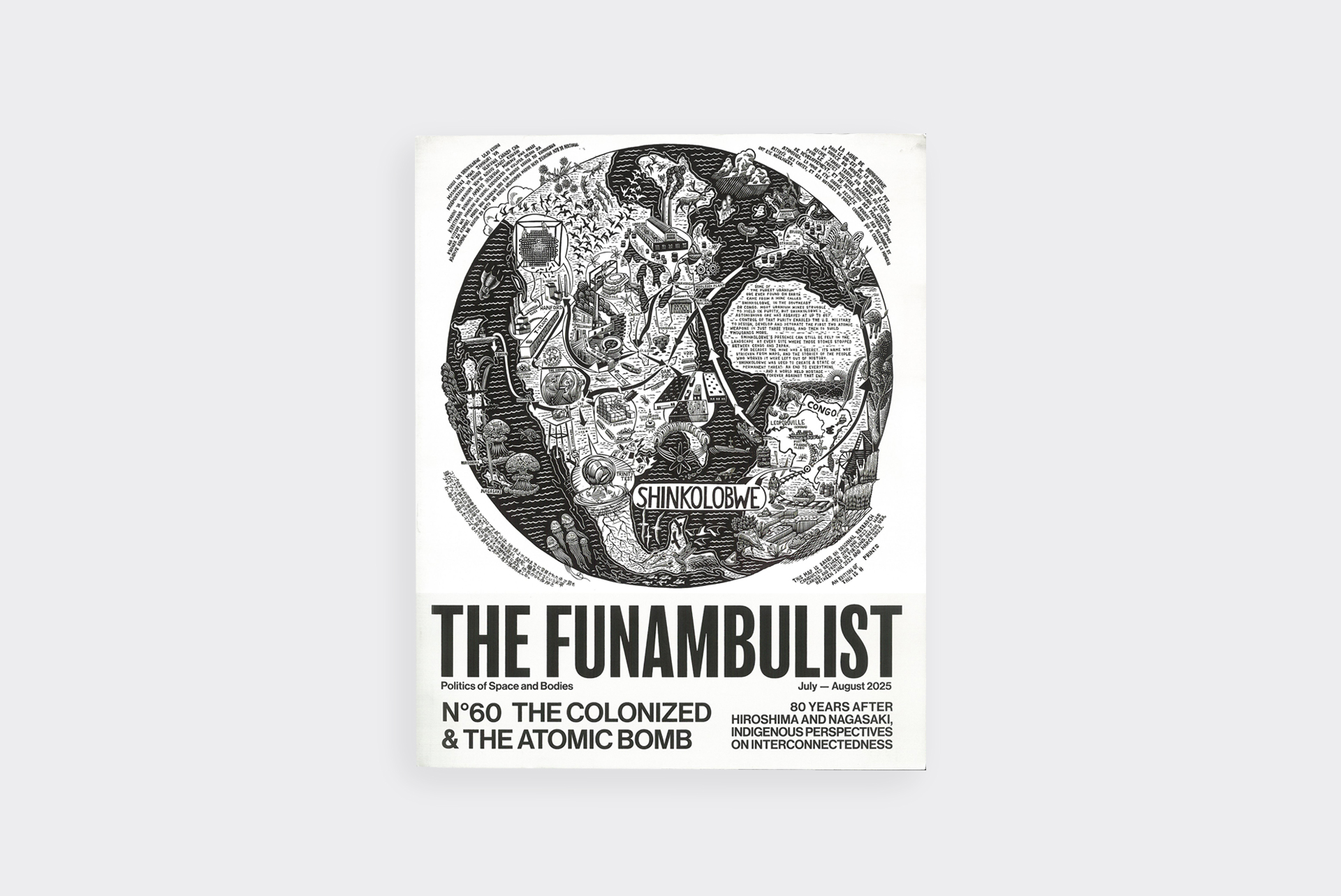English
2025
Published by The Funambulist
Printed by Alpha
Peaugres, France
20 x 25 cm, 80 pages, color, offset, glue bound, softcover
Welcome to the 60th issue of The Funambulist, which concludes the tenth year of publishing the magazine! On August 6th and 9th, we will commemorate the 80th anniversary of the devastating US nuclear bombing of the cities of Hiroshima and Nagasaki. Our contribution to the significance of these two massacres consists in convoking Indigenous perspectives from lands that have been exploited for these two bombings. The idea for it came from listening to Glen Sean Coulthard in Dene Country (in what the Canadian settler colony designates as Northwest Territories) about the uranium extracted from his nation’s land to fabricate the atomic bomb and three decades later, the visit of a Dene delegation to Hiroshima to apologize for the role of their labor and land in the nuclear bombing of the city. This understanding of interconnectedness between distant lands and peoples forms the editorial core of this issue.
In two distinct contributions, Sammy Baloji and Roger Peet (the artist behind the cover artwork) describe how the bomb’s uranium also came from Katanga in Belgian-colonized Congo. The issue includes a beautiful dialogue between Jennifer Marley and Sabu Kohso about the forms of resistance against colonial nuclearism by Tewa pueblos (whose land was stolen to build the Manhattan Project’s Los Alamos National Laboratory) and activists in Japan and Okinawa. It also features a fragment of Lou Cornum‘s Irradiated International manifesto insisting on this interconnectedness. In each of their respective contributions, Kia Quichocho and Jonathan K. Osorio mobilize Oceanian geographies of the US Empire (namely Guåhan, Tinian, and Hawaiʻi) for the role they were made to play in the 1945 nuclear bombings, as well as the subsequent so-called nuclear “testing” and the militarization of Chamoru and Kanaka Maoli’s archipelagos. This issue also insists on an understanding of Japan as a colonial power. Lisa Yoneyama centers the lives of colonized Koreans displaced to Honshu and Kyushu under duress and forced into labor, who were killed in the two nuclear bombings, while Christine Hong describes how the liberation of Korea from Japanese colonialism was prevented by US imperialism only days after the bombings.
In the News from the Fronts section, you can read a much-needed analysis of the political complexities at work in the war in eastern Congo (Onesphore Sematumba), a reading of the colonial forces that bridge Malaysia and Honduras (Semine Long-Callesen and Nancy Dayanne Valladares), as well as an architectural research on the spatial politics of Aulnay-sous-Bois in the Paris banlieues (Zara Metin).
